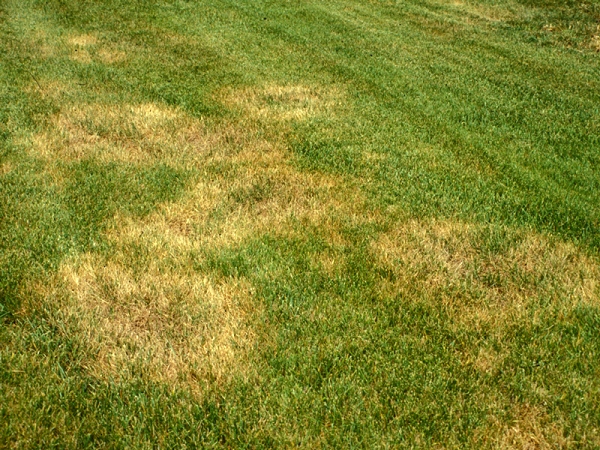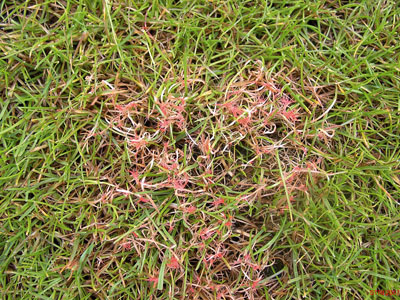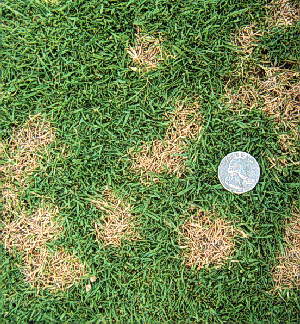
Disease / Fungus control
Most diseases that are found on lawns are caused by fungi. This is more likely to occur on lawns that are improperly watered (evening hours), cutting the lawn under 3 inches in length, mowing when the lawn is still wet, mowing with dull blades, or nitrogen deficiency. Weather conditions such as humid, high temperatures strongly influence the occurrence of disease. Lawn disease control requires extensive knowledge and years of experience. It is important to remember that, different types of lawn fungus cause different types of lawn diseases.
Rhizoctonia solani, (also know as Brown Patch) is the most common lawn disease which most homeowners have to deal with. Brown Patch is a fungus that normally occurs during the mid-summer months, and appropriate to its name, results in the formation of unsightly circular patches of brown, blighted turf.
Fungicide Applications should be applied to prevent spreading of lawn diseases. Our preventative program provides multiple applications to treat such issues, that are preventing your lawn from looking healthy and green. However, weather conditions favor lawn diseases. Do not irrigate lawns in late afternoon or evening if possible, this extends the number of hours the leaves remain wet and increases the likelihood of Brown Patch development. Irrigation or watering your lawn after midnight to mid-morning is preferable, these are the hours the turf would normally be wet from dew. Irrigation in these early morning hours does not extend the leaf wetness period and allows the turf time to dry throughout the day.
Disease development is favored by night-time temperatures above 60° F and by a high relative humidity and/or a thin film of moisture on the leaf surface. Brown Patch infestation can be very rapid, large blighted areas may develop within a 1-2 day period. In light attacks, only the leaves will be affected and the turf recovers within two to three weeks. However, when conditions are favorable for the disease to persist, the crowns or roots may also be killed.
Types of Lawn Diseases

Brown Patch (Rhizoctonia solani)
The first symptom of this lawn disease appears as small, irregular brown patches that can range in diameter from a few inches to several feet. Another obvious symptom is, the leaves and sheaths (the tubular portion of the leaf which wraps around or encloses the stem) become watersoaked, turn to a light brown color, and then die. In other cases, where lawns have only light infestations of this disease, the roots usually are not infected and grass plants often recover.

Red Thread (Laetisaria fuciformis)
The evident symptoms of red thread disease are, the circular patches of bleached or pink/red turf, ranging from 4-8 inches in diameter. The growth of this fungus creates an uneven ragged appearance. It’s mostly visible early in the morning, particularly when the dew is still on the grass. If cool and moist periods are still persistent, the disease will continue to remain, and it can be very undesirable to looks at. However, the good this is that this fungus is not at the root and only attacks the foliage (tip of grass plant), which means the entire plant will most likely not die.
Overall, having low soil fertility will contribute to the spreading of lawn diseases on your lawn. One effective way to treat this type of fungus is by a balanced lawn fertilization program. In addition, outbreaks may be reduced by avoiding irrigation habits that extend dew periods (such as watering in the late afternoon and early evening). If you want to speed up the process, consider a compost topdressing, followed by aeration and overseeding.

Dollar Spot (Sclerotinia homoeocarpa)
Dollar spot disease spreads in leaf tissue or clippings from infected areas. Avoid spreading the disease by simply washing equipment before entering an uninfected area, and by removing and disposing of clippings taken from infected areas. Another way to avoid dollar spot disease from occurring on your lawn is by, removing excess thatch by vertical mowing or power raking. Commercial lawns such as gold courses, cemeteries, fields, etc…, should be aerified regularly and topdressed with sand to reduce thatch buildup.
Unlike red thread disease, dollar spot lawn disease kills the turf clearly to the roots, and serious damage to the turf grass can occur. Dollar spot is usually more serious than it may first appear, this is because the lawn disease kills the entire grass plant. If this infestation does occur on your lawn, you will need a lawn fertilization program as wells as lawn renovations such as, core aeration and overseeding. Fungicides control applications might also be needed, depending on the severity of the infestation.
If you suspect your lawn may have some type of turf disease, contact us and we will send a fully trained and licensed specialist to perform a Healthy Lawn Analysis on your lawn. Bio Lawn experts will give your lawn exactly what it needs.
Call us today at 703-337-5296 to schedule a free estimate.
